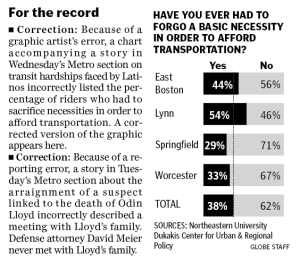
This commentary was first published at The Huffington Post.
As you have no doubt already heard, Alan Rusbridger, editor of The Guardian, wrote on Monday that British security agents recently visited the newspaper’s headquarters and insisted that hard drives containing leaked documents from Edward Snowden be smashed and destroyed in their presence. The incident, Rusbridger said, took place after a “very senior government official” demanded that the materials either be returned or disposed of.
Rusbridger’s report followed the nearly nine-hour detention of Glenn Greenwald’s partner, David Miranda, at London’s Heathrow Airport. Greenwald has written the bulk of The Guardian’s articles about the Snowden documents, and Miranda had been visiting filmmaker Laura Poitras, who has worked extensively with Snowden and Greenwald, in Berlin.
We are already being told that such thuggery couldn’t happen in the United States because of our constitutional protections for freedom of the press. For instance, Ryan Chittum of the Columbia Journalism Review writes, “Prior restraint is the nuclear option in government relations with the press and unfortunately, the British don’t have a First Amendment.”
But in fact, there is nothing to stop the U.S. government from censoring the media with regard to revelations such as those contained in the Snowden files — nothing, that is, except longstanding tradition. And respect for that tradition is melting away, as I argued recently in this space.
The case for censorship, ironically, was made in a U.S. Supreme Court decision that severely limited the circumstances under which the government could censor. The decision, Near v. Minnesota (1931), was a great victory for the press, as the ruling held that Jay Near could not be prohibited from resuming publication of his scandal sheet, which had been shut down by state authorities (of course, he could be sued for libel after the fact).
What’s relevant here is how Chief Justice Charles Evans Hughes described the limited circumstances under which the government could engage in prior restraint:
No one would question but that a government might prevent actual obstruction to its recruiting service or the publication of the sailing dates of transports or the number and location of troops. On similar grounds, the primary requirements of decency may be enforced against obscene publications. The security of the community life may be protected against incitements to acts of violence and the overthrow by force of orderly government.
The text I’ve bolded means that the government may, in fact, engage in censorship if by so doing it would prevent a breach of national security so grave that it could be likened to the examples cited by Hughes. That’s what the Nixon administration relied on in seeking to stop The New York Times and The Washington Post from publishing the Pentagon Papers in 1971.
The Supreme Court, in allowing publication of the Pentagon Papers to resume (New York Times Co. v. United States), wrestled extensively with Near v. Minnesota, and ultimately decided that revealing the government’s secret history of the Vietnam War did not amount to the sort of immediate, serious breach of national security that Hughes envisioned.
But who knows what the court would say if the Obama administration took similar action against The Washington Post, which has published several important reports based on the Snowden documents — including last week’s Barton Gellman bombshell that the National Security Agency had violated privacy protections thousands of times?
Unlike the Pentagon Papers, the Snowden documents pertain to ongoing operations, which cuts in favor of censorship. Cutting against it, of course, is that there’s a strong public-interest case to be made in favor of publication, given the long-overdue national debate that Snowden’s revelations have ignited.
The bottom line, though, is that there is no constitutional ban that would prevent the White House from seeking to stop publication of the Snowden documents — even if U.S. officials are unlike to engage in the sort of theatrics that reportedly took place in The Guardian’s basement.
(Disclosure: I wrote a weekly online column for The Guardian from 2007 to 2011.)






